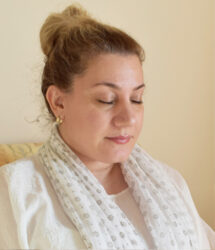Wellness in Children Takes More than Wishful Thinking

When you look at health statistics for children, there is a heartbreaking trend toward more disease during the past two decades. Statistics from the Centers for Disease Control tell us that 9.5% of children currently have asthma, 8.4% have been diagnosed with ADHD, and a shocking 18% are not just overweight, but clinically obese.
In a recent Huffington Post piece, “The Last Well Child,” pediatrician Lawrence Rosen, M.D., remarks that he recently saw a healthy child in his office, which was such an unusual event that it got him thinking. He wonders if our health care system isn’t actually a disease-treatment system in disguise—and with so much emphasis on labeling, classifying and treating disease, we are doing our children (and ourselves) a great disservice.
Dr. Rosen whimsically wonders if he shouldn’t start each appointment with the question, “Tell me what is right with your child today.” He wonders if researchers aren’t creating a disease mindset by establishing ever-stricter parameters for disease diagnosis (for example, children with a cholesterol score above 170 are diagnosed with and treated for hypercholesterolemia; that same disease used to start with a score above 170). When insurance companies pay doctors more for cases involving disease treatment than it does for health prevention, doctors are forced to code every complaint as a disease, which then leads to treating children for conditions that wouldn’t have been treated in the past.
Personally I agree—there is something wrong with a society in which disease is considered the norm rather than the exception. Yet we not only have to think more in terms of wellness, we have to give parents and children scientifically proven tools to improve wellness. There is greater awareness today about diet and exercise, for instance, but we all know that talk is not it enough—it takes a certain consciousness for parents and teachers to create an environment in which healthy choices are easy for the child. And at some point in every child’s growth, it takes a heightened awareness of their own to make healthy choices when outside the safe environment of the home.
That’s why practicing the Transcendental Meditation technique is a marvelous way to improve well-being for children and adults alike. Children and adults who practice TM lower their stress rates and improve their ability to think clearly—and thus find themselves spontaneously making healthier choices. When kids are able to dissolve stress instead of store it in their minds and bodies, they find it easier to realize their stomach is full and stop eating before the third cookie. When, as a parent, you take time to meditate and recharge after work, it could be a lot easier to spend time exercising together as a family after dinner instead of flopping in front of the TV in exhaustion.
And there are other side benefits of practicing the TM technique. Research shows that it helps kids raise their grades, stay focused, overcome ADHD, say “no” to substance abuse, and lower blood pressure. In fact, it helps bring balance to many areas of life—mind, body, behavior and even the environment. Which makes me think we need a new definition of wellness—not only the absence of disease, not only “a patient who has not been completely worked up” by his doctor (as Dr. Rosen defined it), but a person who is happy, successful, free of stress and disease, and thriving. It doesn’t seem too much to expect for ourselves or our children.
About the Author
Linda Egenes writes about green and healthy living and is the author of six books, including The Ramayana: A New Retelling of Valmiki’s Ancient Epic—Complete and Comprehensive, co-authored with Kumuda Reddy, M.D.
More Posts by Linda
- Tired and Burned Out? Transcendental Meditation Can Help: An Interview with Dr. Nancy Lonsdorf, MD
- Worried About the Future? Six Ways to Calm Your Anxiety
- What Do You Carry in Your Self-Care Tool Kit?
- Five Strategies for Family Caregivers
- From the Streets to College in Four Months: The Communiversity of South Africa Empowers Underserved Youth in Cape Town





